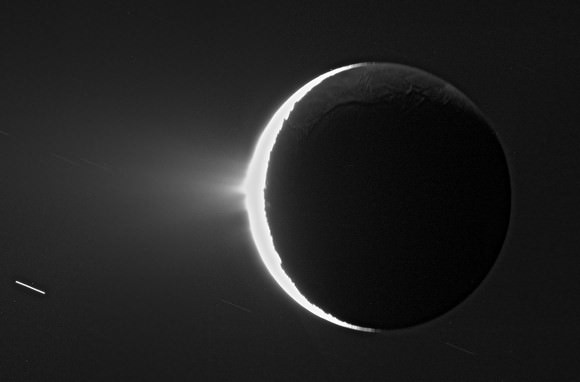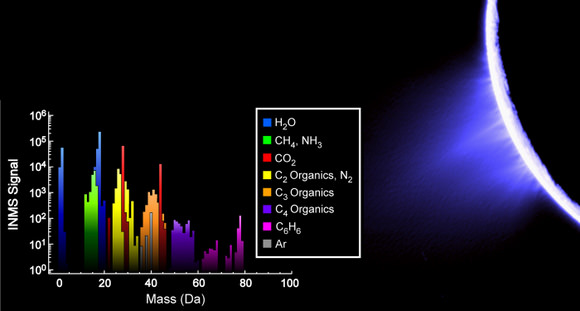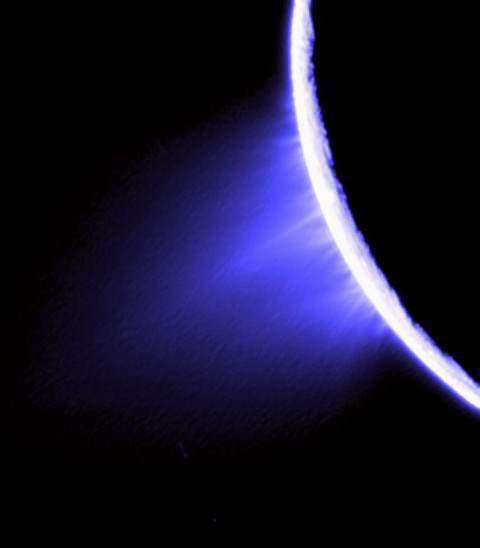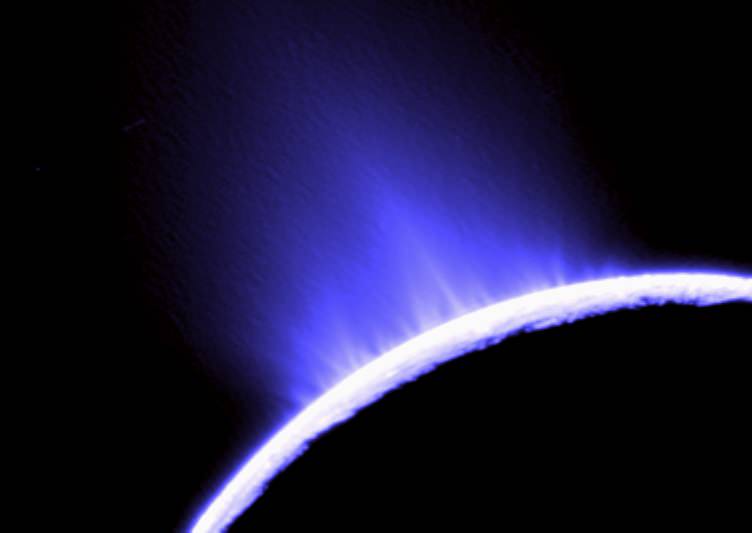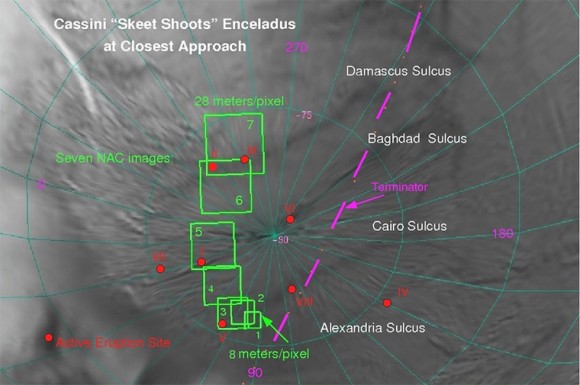[/caption]
Looking to go somewhere far-flung and exotic? Now is the time to book your excursion, and the Cassini spacecraft has several flyby tours of the moons Titan and Enceladus scheduled for the next few months. Major tour operators say the cost of long-haul flights and summer holidays prices are at an all time low. But with Cassini, you can travel for FREE! just by following the along with Universe Today and the Cassini website. Thrill with some of the closest flybys ever of the mystery moon Titan, and delight in explorations of the geyser plumes of Enceladus. As a special bonus, if you book today, you can experience Saturn’s solar equinox, as in August the sun crosses from the southern hemisphere to the north. Wonderful worlds are beckoning – come away starting June 6 with Cassini! It’s a worry free vacation. See below for available tour dates! Destination fees do not apply.
Seriously now, here are the upcoming dates scheduled for Cassini flybys of Titan and Enceladus:
Dates listed in Spacecraft Event Time (SCET) — the time the event happens at the spacecraft based on Coordinated Universal Time (UTC).
Click here for details about time conversions.
June 6 — Titan flyby (965 kilometers) — T-56: This is the only dusk side observation at mid Southern latitudes, and the Ion and Neutral Mass Spectrometer (INMS) will be taking advantage of that, riding along with Cassini’s RADAR at closest approach. It’s the only time in the mission the spacecraft will get simultaneous coverage of the dusk side while in the wake magnetospheric interaction region. The Visual and Infrared Mapping Spectrometer (VIMS) and the Imaging Science Subsystem ISS will observe eastern Tsegihi, a bright region in Titan’s southern mid-latitudes.
June 22 –– Titan flyby (955.5) kilometers — T-57: RADAR and INMS again share prime opportunities near closest approach. The RADAR synthetic aperture radar (SAR) imager observation runs parallel to observations in the T-55 and T-56 flybys in the southern hemisphere mapping sequence. Earlier, RSS observes an occultation on the inbound leg. T-57 is another flank-out, post-dusk flyby, with a minimum altitude of about 1000 kilometers. As in T-55 and T-56 flybys, magnetometer measurements will provide a description of the draping and the pileup of the external magnetic field around Titan on the nightside hemisphere. The flyby will also be a good complement to previous flybys in order to characterize the background field for a similar local time with respect to Saturn and different SKR (Saturn kilometric radiation) longitudes.
July 8 — Titan flyby (965 kilometers) — T-58: The Ultraviolet Imaging Spectrograph UVIS observes a solar occultation while inbound towards Titan, and then a stellar occultation on the spacecraft’s outbound trajectory. RADAR’s SAR swath runs along the western edge of Xanadu to study its boundary with Shangri-La, a large equatorial dark region. The swath runs parallel to the T-55/56/57 mapping sequence and covers Ontario Lacus, a methane-ethane lake near the south pole of Titan.
July 24 — Titan flyby (955 kilometers) — T-59: The spacecraft’s instruments sample Titan’s southern mid-latitudes, with the Cassini Plasma Spectrometer (CAPS) controlling pointing at closest approach.
Aug. 9 –– Titan flyby (970) kilometers — T-60: RADAR takes a South pole pass. The resulting swath links up with the T-13 flyby swath at the edge of Xanadu, an Australia-sized, bright region on Titan. ISS will acquire high-resolution, low-phase-angle imaging of western Senkyo, a wide dark region near the equator.
Aug. 11 –– Saturn will go through the solar Equinox as the Sun crosses from the southern hemisphere to the north. For about two months on either side of that date rings scientists will be running an Equinox campaign to observe the rings in this season change.
The Cassini team will be watching for topographic features in the rings that can only be seen in this special geometry. Any features in the rings that are not exactly in the ‘ring plane’ will be seen to cast shadows.
Cassini scientists will also be looking at the thermal properties of the rings in this season change. Most rings have seen heating on the north side over the past 14.5 years, but the B ring’s densest portions have remained cold with no solar heat penetrating that ring for the past 14.5 years.
This Rings Equinox campaign is a unique opportunity provided by the long duration of the Cassini Mission.
Aug. 25 — Titan flyby (970 kilometers) — T-61: RADAR gathers a SAR swath over the Huygens landing site. The swath is near-equatorial, covering Dilmun, Adiri and Belet. As the SAR parallels and overlaps the T-8 flyby, this should provide a good stereo opportunity over the Belet sand dunes. T-61 is the only southern equatorial wake observation in the mission, so the Magnetosphere and Plasma Science (MAPS) instruments take advantage of the opportunity.
Oct. 12 — Titan flyby (1,300 kilometers) — T-62: This flyby offers excellent VIMS and UVIS observing opportunities, including a UVIS solar occultation that reaches down to Titan’s surface. CIRS takes observations while Titan is in eclipse, measuring the temperature, aerosol density and composition near 75 South. This is the only low altitude in nose side magnetospheric interaction pass in the extended mission.
Nov. 2 — Enceladus flyby (99 kilometers) — 120EN: This is the seventh targeted Enceladus flyby of the Cassini mission and will take the spacecraft to the lowest altitude above the active south pole region. This will also be the deepest plume passage of the tour, allowing for sensitive measurements of the geyser-like plume composition and density.
Nov. 21 — Enceladus flyby (1,603 kilometers) — 121EN: The eighth targeted Enceladus flyby, this is an approximate 1600 kilometer pass over the south pole enabling imaging of the warm, active tiger stripes.
Dec. 12 — Titan flyby (4,850 kilometers) — T-63: CAPS takes advantage of the T-63 flyby being the best wake passage in the extended mission to direct pointing at closest approach.
Dec. 28 — Titan flyby (955 kilometers) — T-64: RADAR captures HiSAR SAR over the North polar lakes to perform stereo and/or seasonal change detection. This is the only north polar SAR in the extended mission. Due to the location of the point of closest approach, this is a potentially important flyby in the effort to detect an intrinsic magnetic field within Titan. This is also an opportunity to sample the high northern atmosphere.
Source: Cassini website
